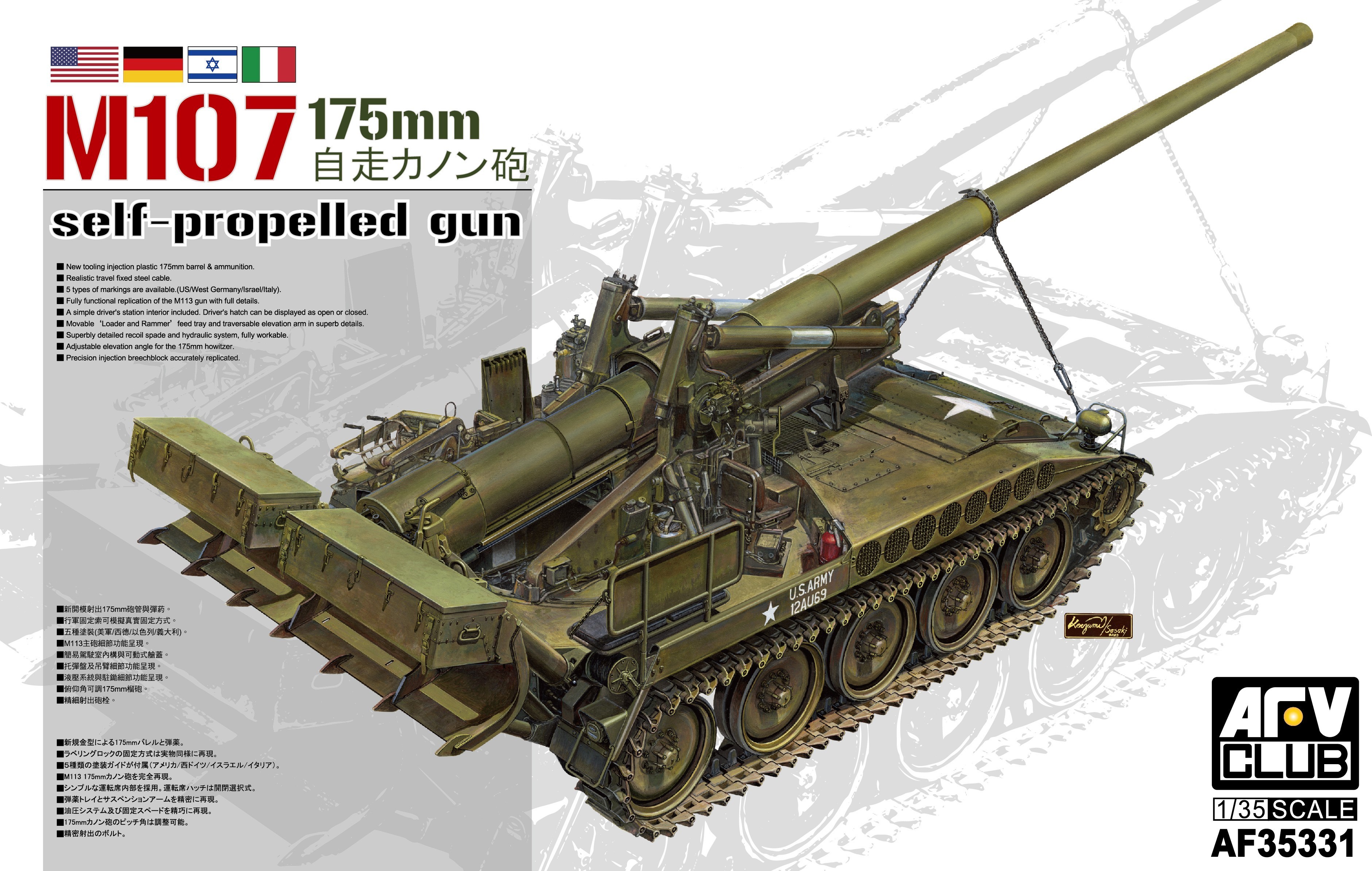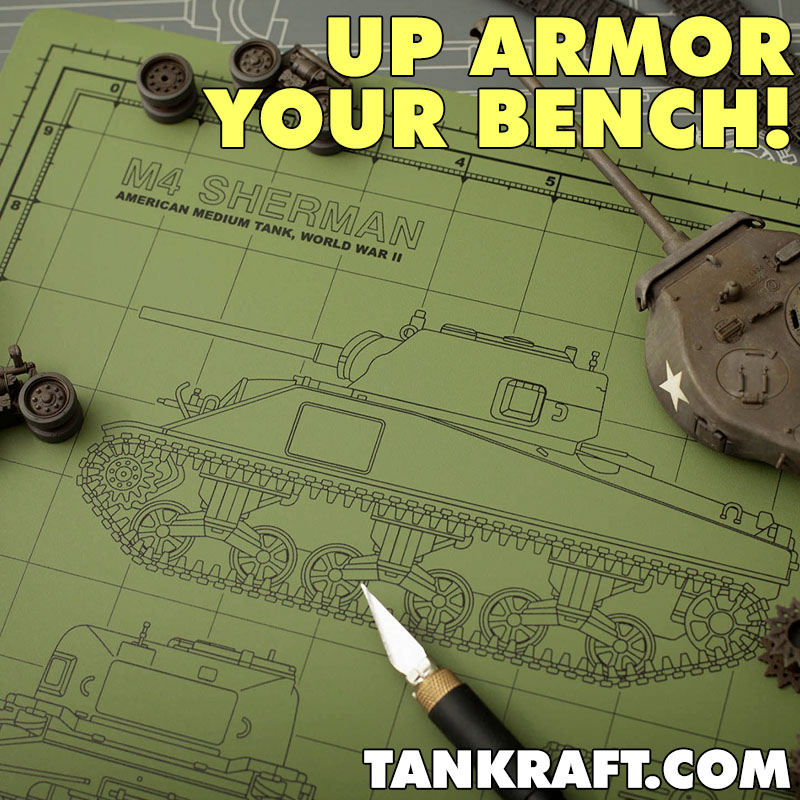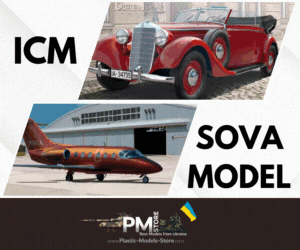
History
In the 1950’s the US Army fielded equipment that could survive and fight on a nuclear battlefield. The Army quickly discovered the downside of that nuclear survivability – mobility. The Army pivoted to prioritizing strategic mobility over survivability and the M107 175mm Self-Propelled Gun and the M110 203mm Self-Propelled Howitzer were conceived. The two weapons shared an aluminum alloy hull, automotives, recoil system and fire-control.
The M107 was manufactured by Pacific Car and Foundry (Paccar) and was introduced in 1962. It featured an open top, aluminum hull with a large spade in the rear to transfer recoil energy to the soil. The M107 carried only two rounds of ammunition, the remaining rounds being carried on an M548 ammunition carrier that was paired with each gun. Due to the weight of the ammunition, a hydraulic loader-rammer would swing to the rear and lift a projectile from the back of the M548, into the breach, and ram it into the chamber. Once the projectile was rammed, the load-rammer was swung to the side. Five of the thirteen-man crew rode on the M107 with the remaining crew in the M548.
The M107 was a long-range weapon that was used in the counterbattery role and for interdiction. Its high velocity, relatively flat trajectory resulted in very little lateral dispersion of the rounds, but a large range dispersion. It was intended to employ shoot and scoot tactics to avoid enemy counterbattery fire and could be emplaced and ready to fire in eight minutes. The M107 was exported to several countries and fought in Vietnam, various Arab-Israeli conflicts, and the Iran-Iraq wars. The US Army and Marines converted their M107s to M110A2s in the late1970s by swapping out the barrels for the extended range 203mm tube.
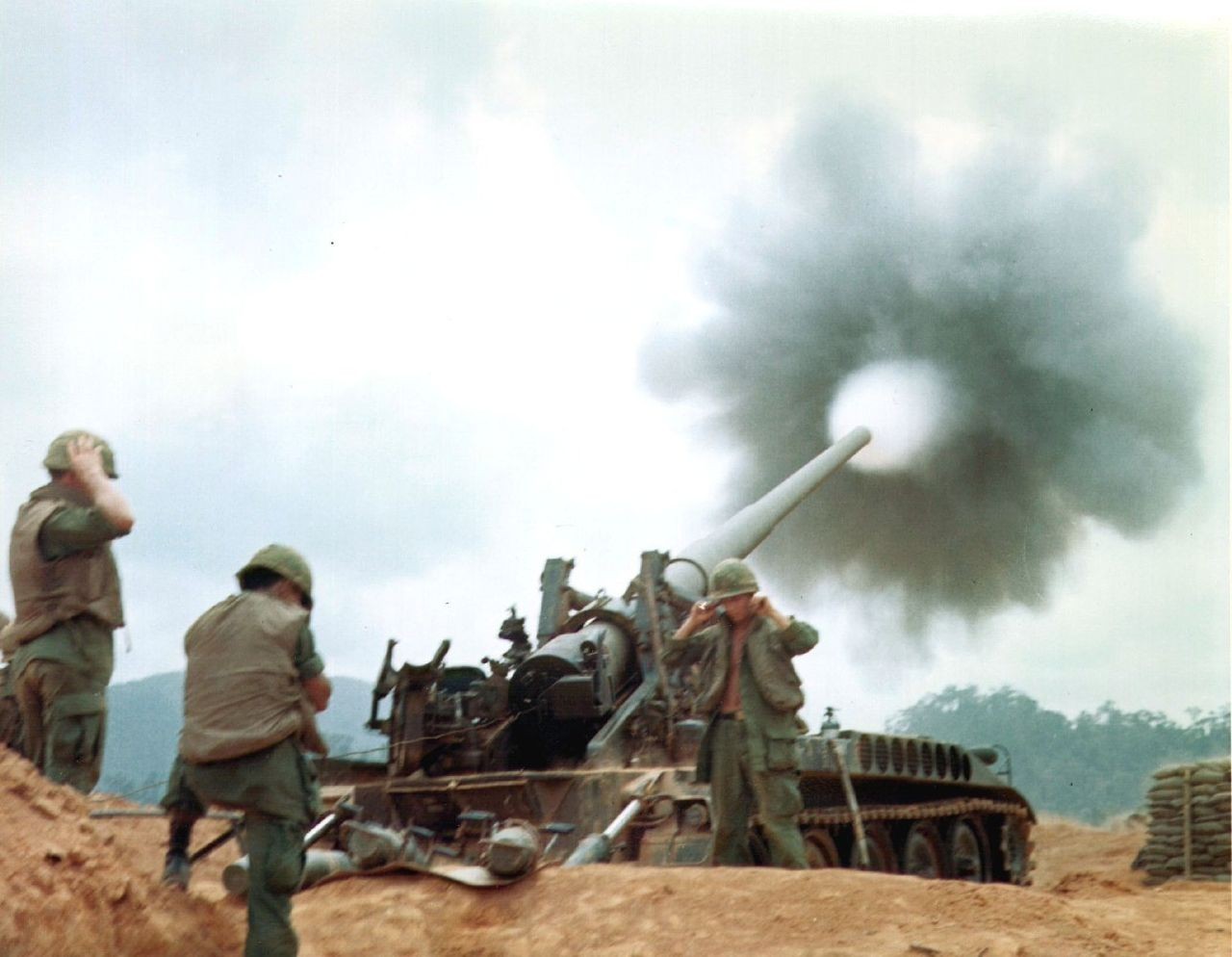
Review
Prior to this release, the only option for the M107 was the1988 vintage Italeri kit or its Revell and Tamiya re-boxings. The Italeri kit was great in its day, but lacks the detail expected by today’s modeler. The AFV Club delivers a 21st century experience and results. The parts count tells the story of the kits. While both kits have rubber band tracks, the Italeri kit contains fewer than 200 parts and the AFV Club kit has over 600. Like the real article, the AFV Club M107 kit only varies from their M110 kit in the tube and ammunition. All but two sprues, decals, and instructions and box art are shared with the excellent AFV Club M110 kit.
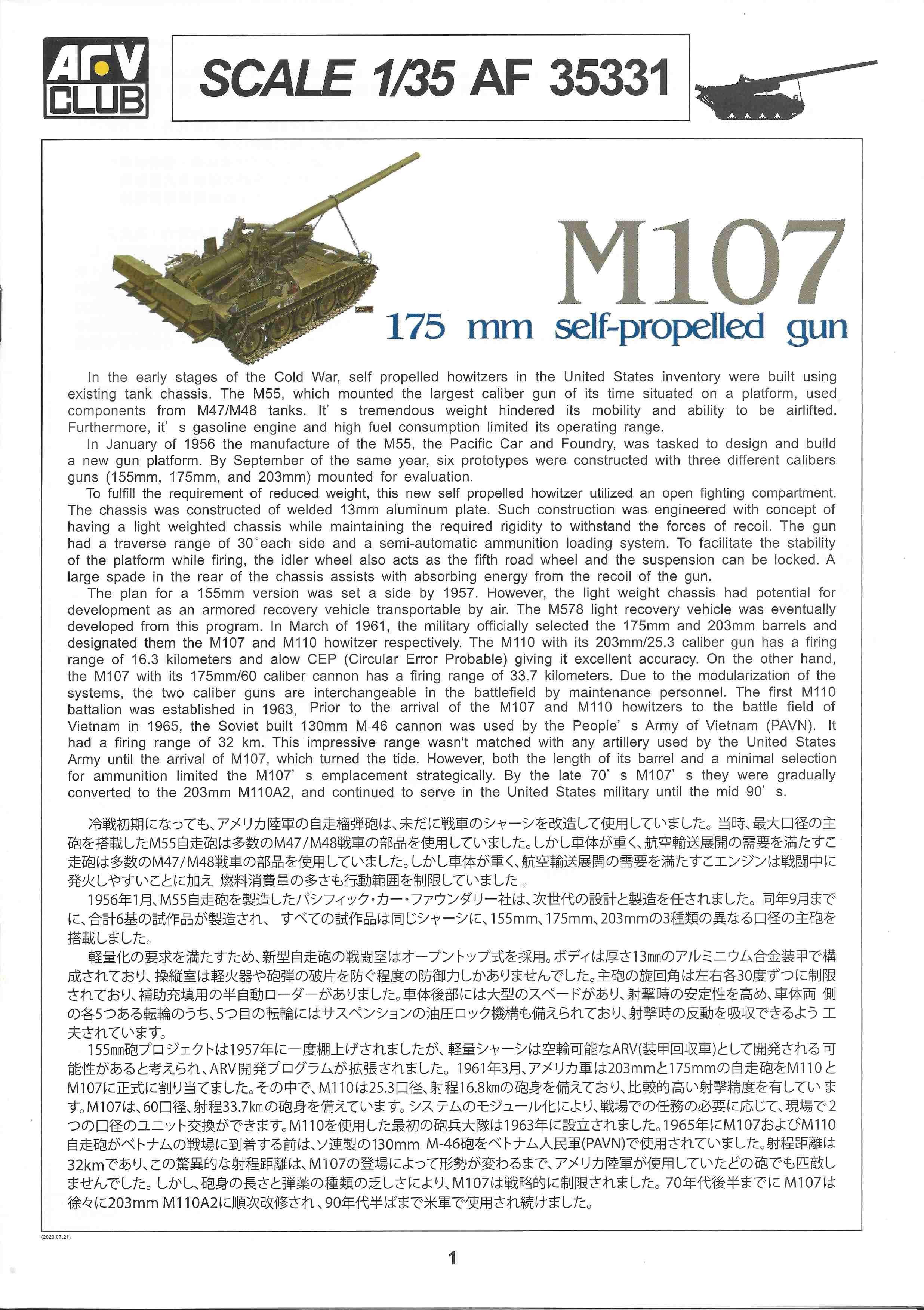
The kit features a simplified but adequate drivers compartment which can only be viewed from the driver’s hatch. The bottom of the turret well is nicely detailed containing a maze of hydraulic lines. The five-piece road wheels are a big improvement in accuracy over the simplified Italeri ones. The Italeri kit reduced and simplified the extensive hydraulics on the carriage to a molded-on two-dimensional caricature. AFV Club has dedicated one full sprue to individually molded hydraulic lines for the carriage.
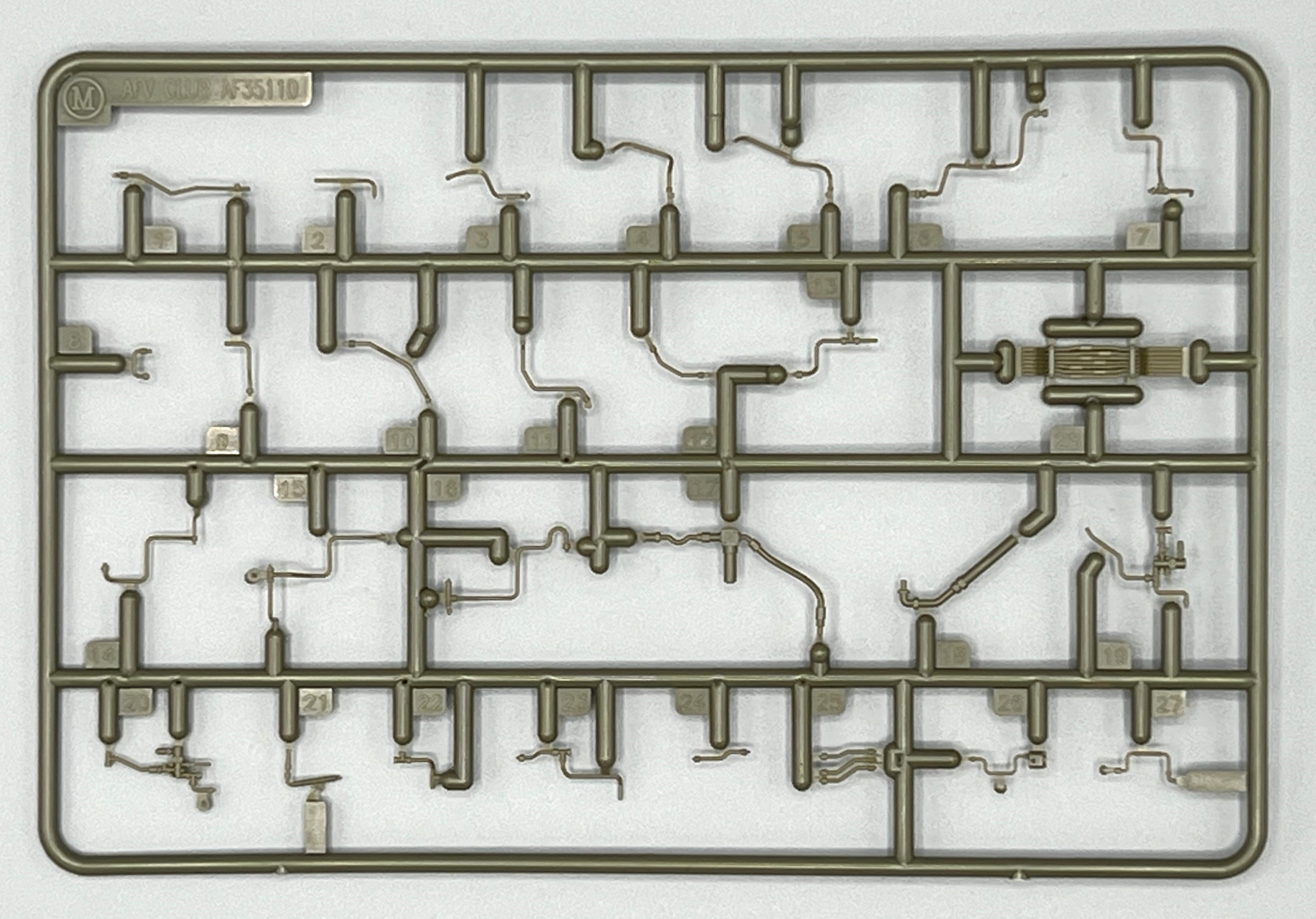
The loader-rammer on the Italeri kit was undersized and oversimplified. AFV Club produced a far more accurate and detailed loader-rammer with its own vinyl sprue of hydraulic hoses that is movable from stowed to lifting to ramming positions. That long barrel is molded in five parts in styrene with slide-molded rifling.

The eye is immediately drawn to the exceptionally long tube. AFV Club would be wise to offer a turned aluminum tube as a separately purchasable item. The bicycle chain supplemental travel lock isdelicately molded. The breechblock can be depicted open or closed and is finely detailed. The multi-part panoramic telescope (pantel) and quadrant sights are exquisite. The spade is workable and can be posed from locked for travel to dug in and it includes all of the brackets and OVM tools on the backside. Like the AFV Club M110, towed 8-inch, and towed Long Tom, the workable equilibrators feature brass tubing for the sleeve. A good assortment of artillery tools and implements are included. The items that I measured were dimensionally accurate and look right. The only details that jump out at me as wrong are trivial – missing bottom seat cushions, and fuel cans instead of water cans for water to swab the breech and chamber between rounds. You will also have to add the wiring for the intercom system.

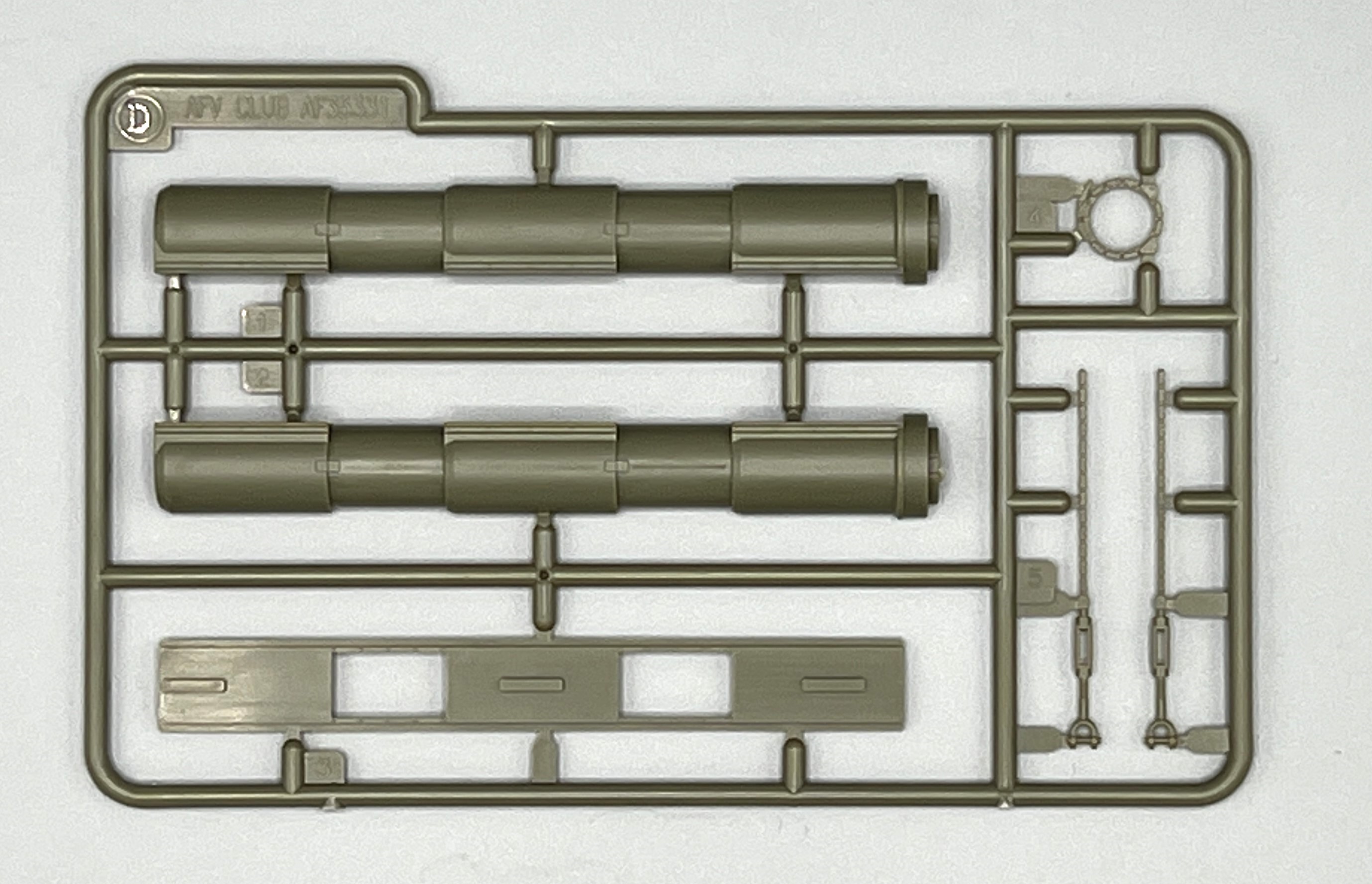
The instructions are a 24-page booklet breaking the build into 48 steps. The instructions include paint call outs for GSI Creos, Humbrol, Vallejo, and Lifecolor. The instructions are clear and easy to follow for an experienced modeler. The only error/omission that I noted in the instructions is that step 20 is missing glue instructions. The brass tube N should be attached to F38 with CA. No glue should be used on part F38 when attaching it to the cradle. The instructions for the detailed hydraulics are impressive and show the placement of each color-coded hydraulic line. In addition, they show an elevation of each side with the color-coded lines to help the modeler visualize the part placement. The instructions include two pages of painting and decaling instructions. Decals allow for two US Army Vietnam guns, along with ones in Italian, German, and Israeli service.
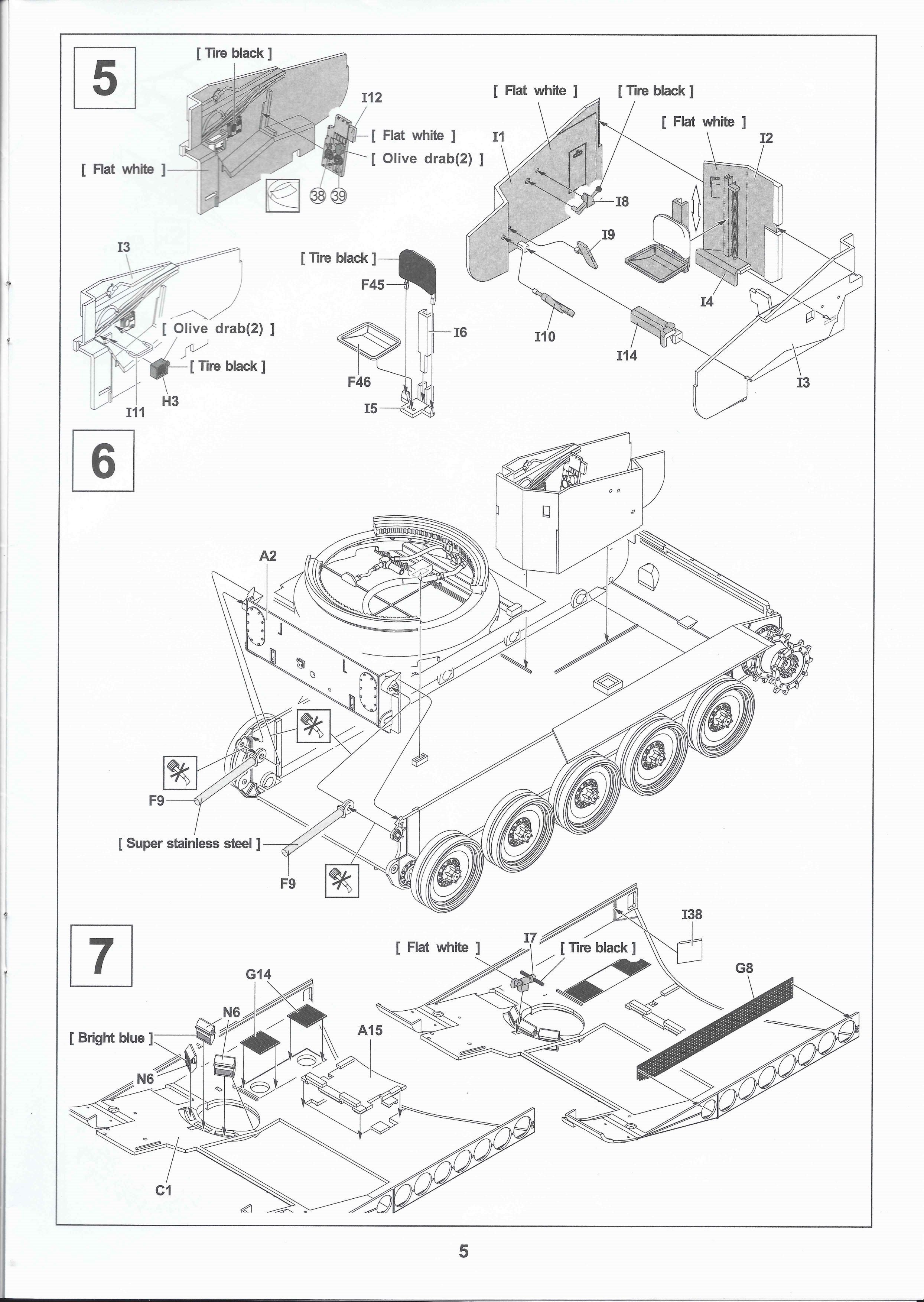


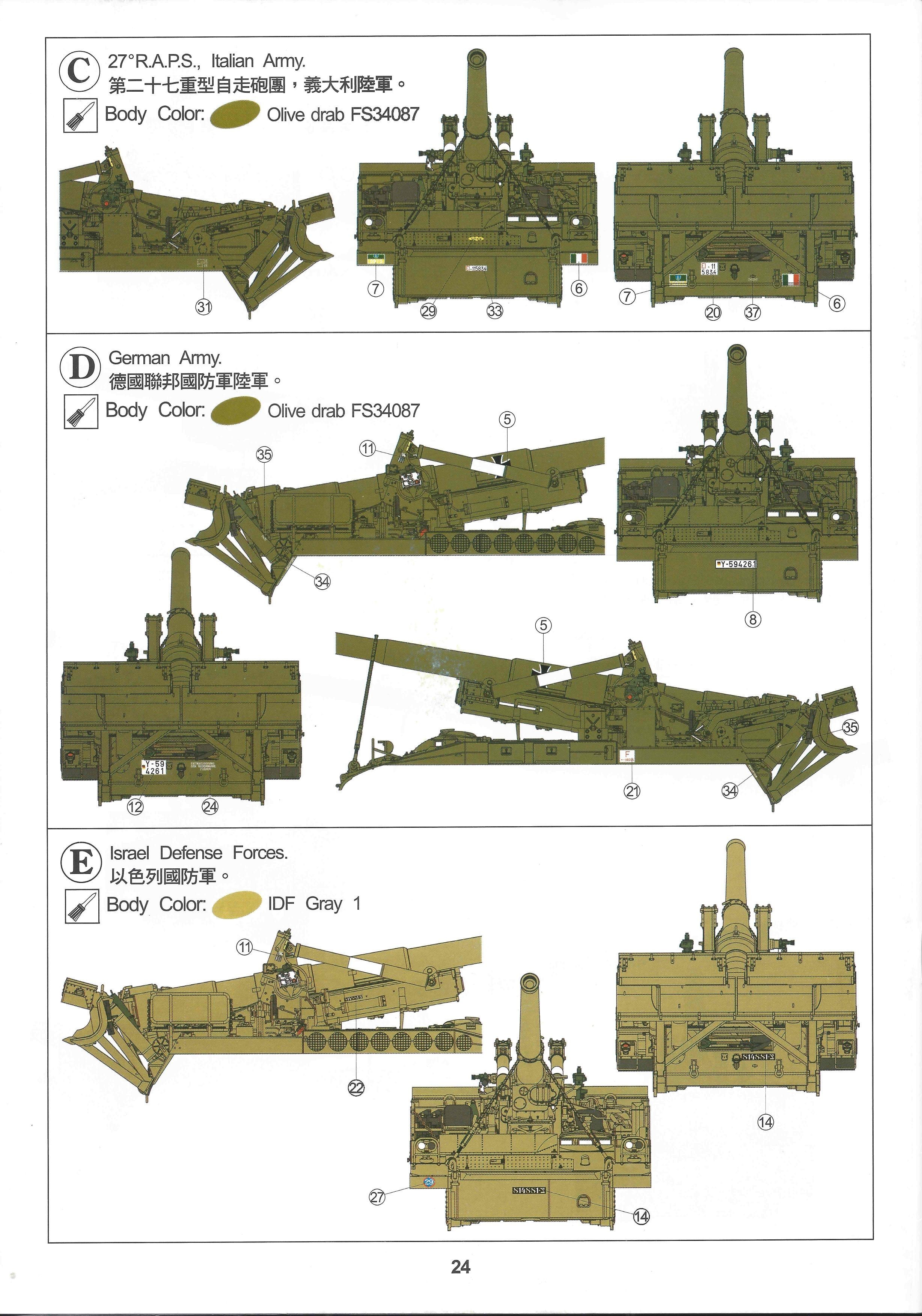
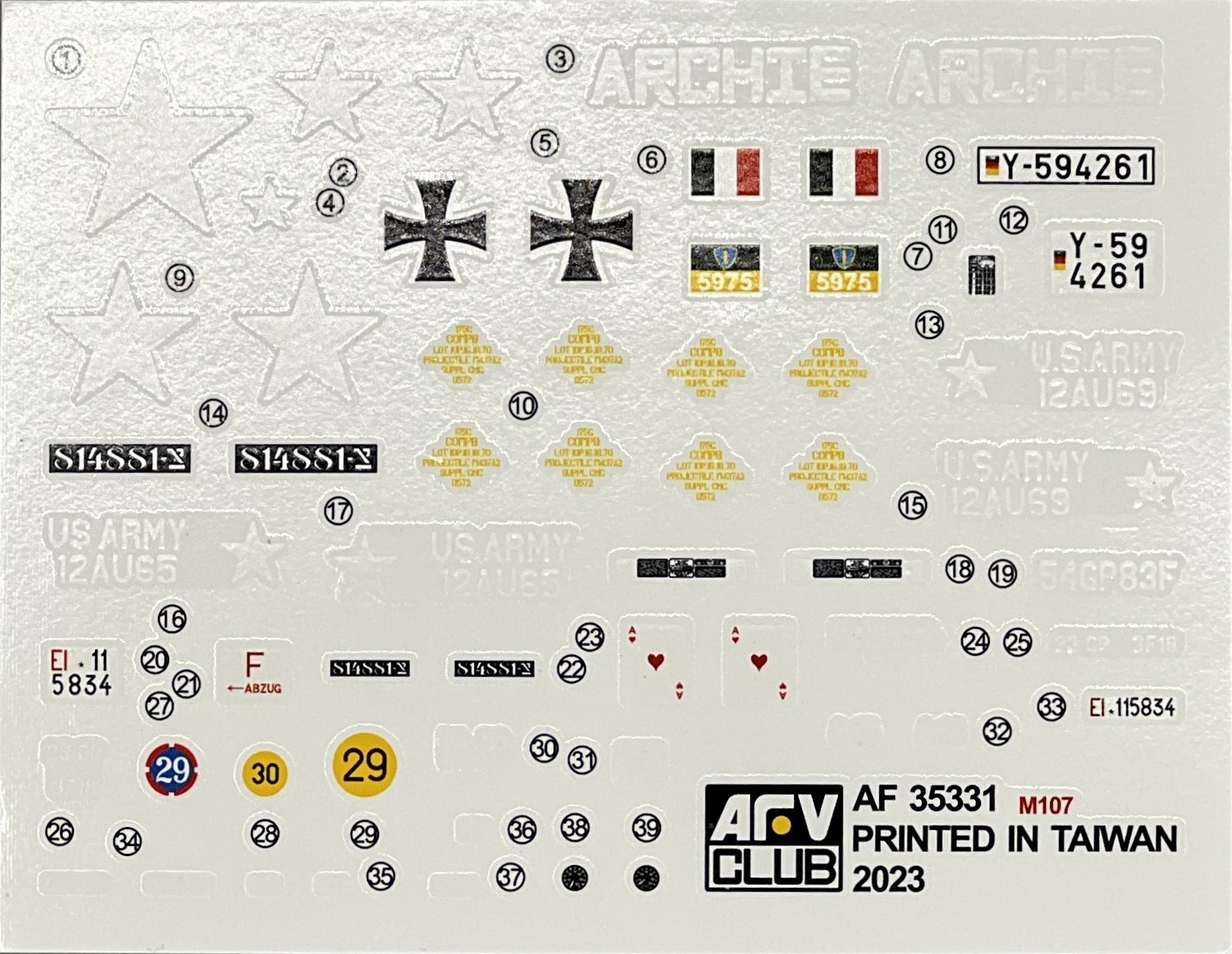
The kit consists of eighteen olive drab sprues, one clear sprue, three sprues of poly caps, one sprue of vinyl hoses, two brass tubes for the equilibrators, a PE fret, rubber band tracks, and string for the tow cable totaling over 600 parts. Of this only two sprues and the decals are new. The other sprues are shared with AFV Club’s M110 kit and others. With this many shared sprues, duplicated spruce letters are common. If you can’t find that part, look for the other sprue K or E or I or O or N.
Sprue and part count break out:
A – 15 parts upper hull (M110)
B – 29 parts (x2) road wheels (M110)
C – 2 parts hull tub and top deck (M110)
D – 6 parts rear barrel and travel lock (NEW)
E – 56 parts cradle and lower carriage (M110)
F – 55 parts (x2) details (M110)
E – 34 parts OVM tools (M113A1)
G – 32 parts Photoetch (M110)
H – 21 parts (x2) details (M110)
I – 48 parts drivers compartment and turret well (M110)
I – 6 parts (x3) poly caps for the road wheels (WC51)
J – 1 part decals (NEW)
K – 75 parts spade and loader-rammer (M110)
K – 19 parts (x2) gas cans, holder, and pour spout (M54A2)
M – 27 parts hydraulic hoses (M110)
N – 16 parts clear parts – lights and periscopes (M110)
N – 2 parts brass tube for equilibrators (M1A1 Long Tom)
O – 9 parts vinyl hydraulic hoses (M110)
Q – 11 parts tube and projectiles (NEW)
T – 2 parts rubber band tracks (M110)
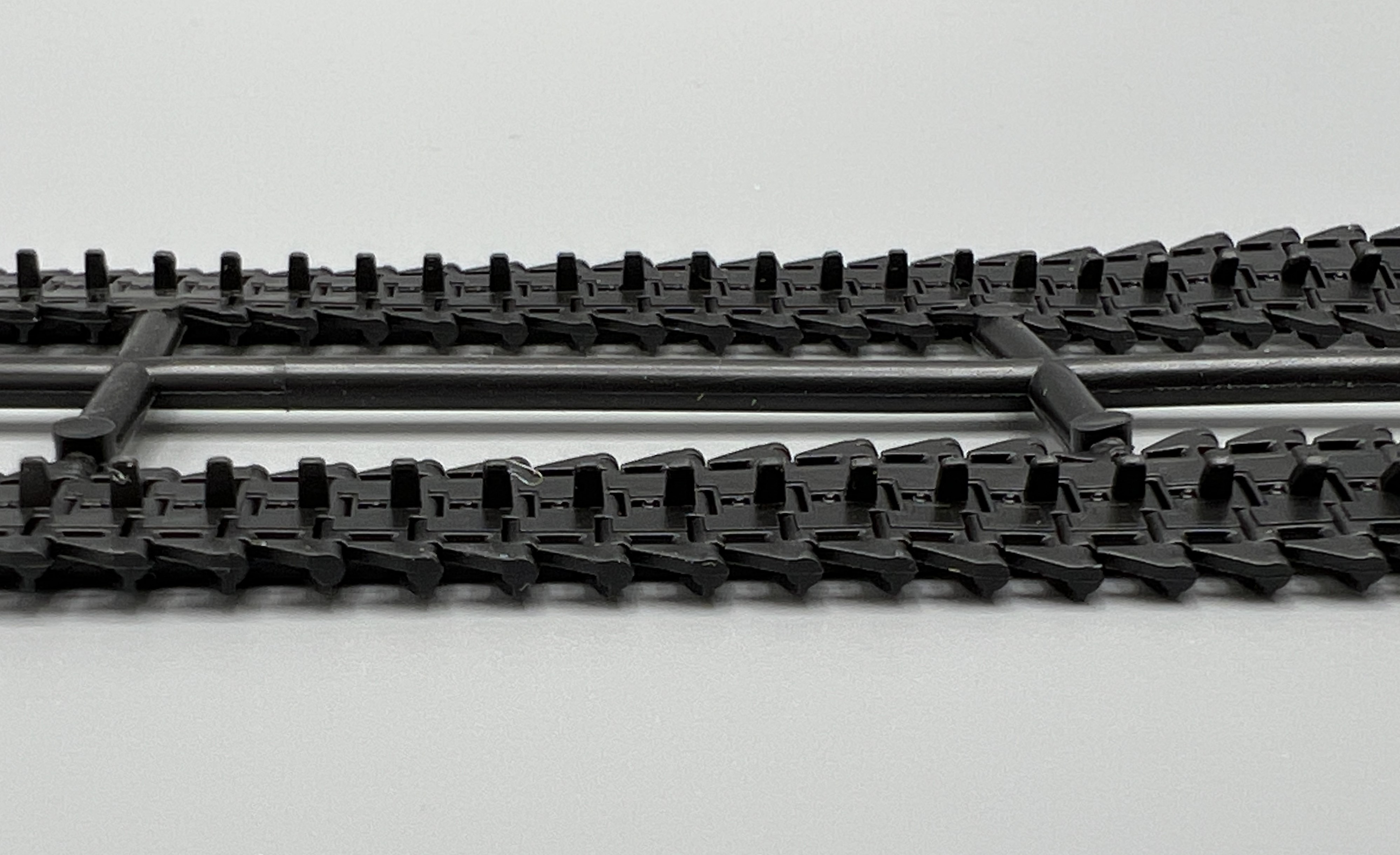
The parts look great – no flash, crispy molded, plenty of detail. Typical of AFV Club there are lots of tiny parts. Personally, I love the detail provided by the army of tiny parts. You will need good tweezers and one of the high-end single cut sprue nippers like a GodHand to be successful with the small, delicate parts. What most impresses me are the two sprues of hydraulic hoses: one molded in styrene for the lines on the lower carriage, and one molded in vinyl for the loader-rammer. These are, however, a bit tricky to install. For the vinyl hoses it is best to glue one end at a time and let the glue cure thoroughly before gluing the other end. Other highlights include the delicately molded bicycle chain secondary travel lock to keep that exceptionally long, thin barrel from bouncing and waving as it moves down the road. The rubber band tracks look fine. AFV Club does offer individual link tracks as a separately purchased option.
Conclusion
AFV Club has done an outstanding job of creating a detailed and more accurate kit of the M107. The parts count is on the high end even without individual link tracks. While the individually molded styrene and vinyl hydraulic cables add realism, they are delicate and require care and patience to clean and install. This is not a kit for the ham-fisted assembler. This is a large, impressive piece and is a good addition to your Vietnam era collection. Now, off to the bench, the kit is calling my name. Thanks to AFV Club for providing the review kit, and Pei, and Woody, and Eric for handling the transport and delivery from Tiawan.











